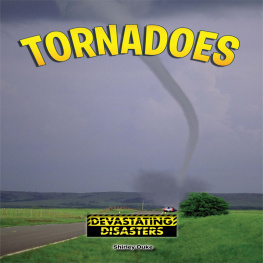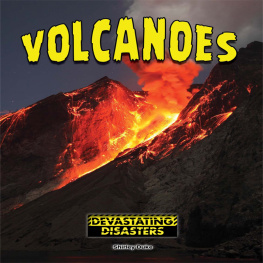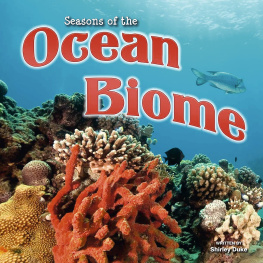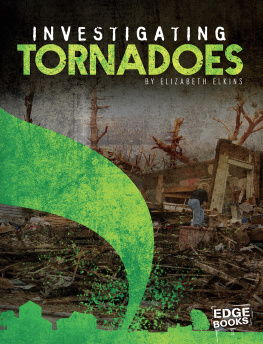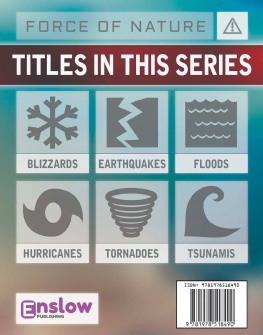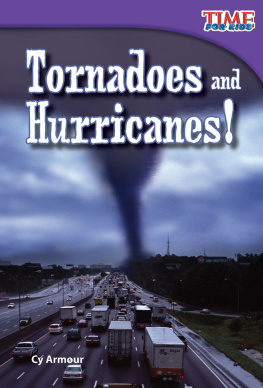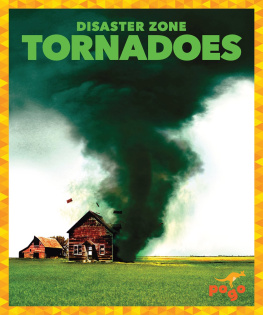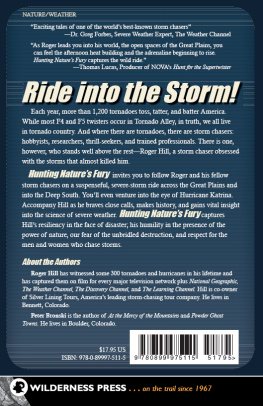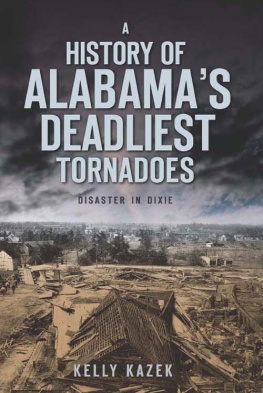Table of Contents
Guide
TORNADOES
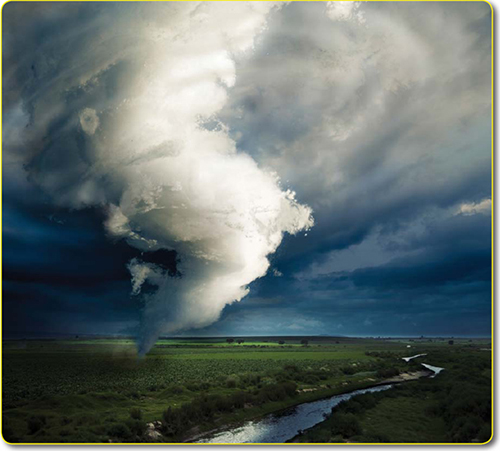
Shirley Duke

rourkeeducationalmedia.com | 
Scan for Related Titles
and Teacher Resources |
Before & After
Reading Activities | Level: SWord Count: 2,565 words 100th word: damage |
Before Reading:
Building Academic Vocabulary and Background Knowledge
Before reading a book, it is important to tap into what your child or students already know about the topic. This will help them develop their vocabulary, increase their reading comprehension, and make connections across the curriculum.
Look at the cover of the book. What will this book be about?
What do you already know about the topic?
Lets study the Table of Contents. What will you learn about in the books chapters?
What would you like to learn about this topic? Do you think you might learn about it from this book? Why or why not?
Use a reading journal to write about your knowledge of this topic. Record what you already know about the topic and what you hope to learn about the topic.
Read the book.
In your reading journal, record what you learned about the topic and your response to the book.
After reading the book complete the activities below.
Content Area Vocabulary
Read the list. What do these words mean?
Doppler radar
forecast
Fujita Scale
funnel cloud
interdisciplinary mesocyclone
meteorologists
simulator
supercells
updraft
wall clouds
After Reading:
Comprehension and Extension Activity
After reading the book, work on the following questions with your child or students in order to check their level of reading comprehension and content mastery.
Explain the differences and similarities of a gustnado, dust devil, and tornado. (Summarize)
What information is used to determine a tornado rating? (Asking questions)
Why should you listen to weather services during severe weather? (Text to self connection)
How do meteorologists and storm chasers work together? (Summarize)
Describe the different shapes a tornado makes. Is one more destructive than another? Explain. (Visualize)
Extension Activity
Is where you live prone to tornadoes? Do you have other natural disasters in your area? Having an emergency plan and emergency kit is essential. Create an emergency plan for your home and an emergency kit. What would you include in your kit and why? Wheres the safest place in your home during a natural disaster like a tornado? Why is it the safest place?
Tornado!
A thunderstorm blasts rainwater against the window. Hail falls from the sky and lands with a bounce. A dark twisting shape drops from the gray-black cloud. Time to take coverits a tornado!
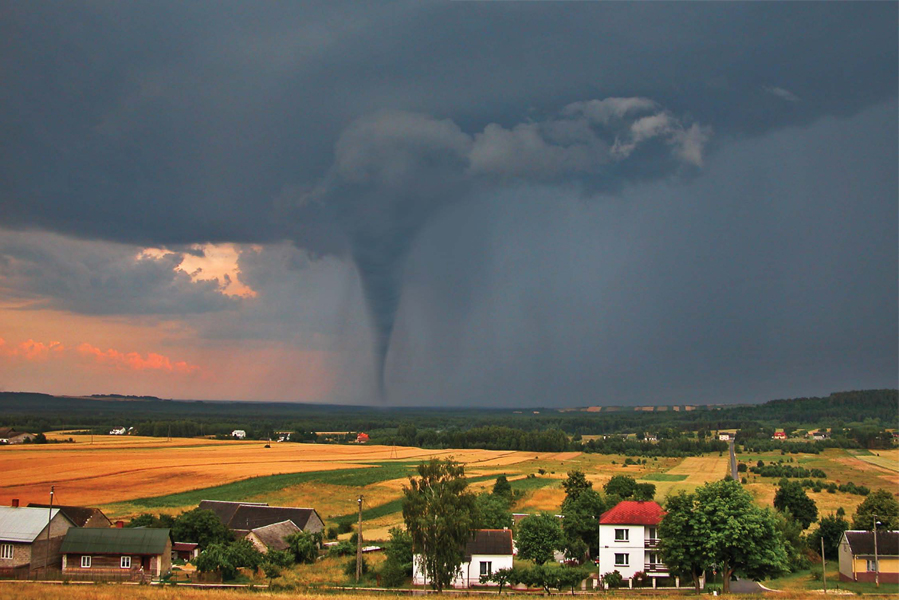
A tornado is a column of air that rotates powerfully and drops from a thundercloud to the ground. Not every storm produces tornadoes. Storms vary in the amounts of rain, hail, lightning, and winds they produce. Some spin out tornadoes.
Large tornadoes can have winds as fast as 300 miles (483 kilometers) per hour. They blow trees from the ground, lift cars, and damage buildings and roofs.
Tornadoes occur on the ground and cause damage there. A rotates in the same cone shape. It comes from clouds but it does not touch ground or cause any damage. Still, it can become a tornado if it drops down far enough.
All tornadoes look somewhat different. They can be funnel-shaped, ropy, or wide like a wedge. Wind is clear, but most tornadoes have color. The color depends on the soil and debris they move over and pick up.
Tornadoes may look gray with rain, black, or white. The red dirt of Oklahoma sometimes makes the tornadoes look red. Some are so clear they are hard to see. They can even have more than one funnel.
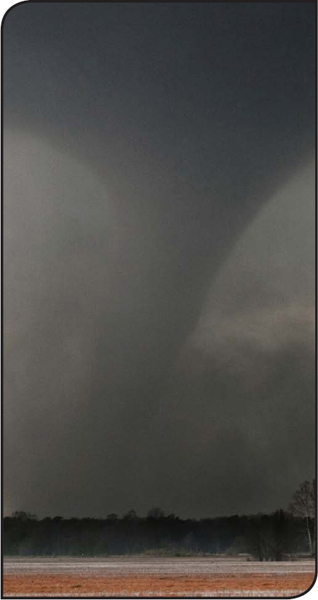
Tornadoes may be difficult to spot in heavy rain. An F3 tornado with winds up to 200 miles per hour (321.9 kilometers per hour) in 2006 near Wynne, Arkansas, destroyed several houses, mobile homes, and grain silos.
Tornadoes are unpredictable. They can move from any direction. Most move from southwest to northeast. A few move west to east. Their paths can change directions or even turn around.
Short-lived tornadoes may last a few seconds but some can last up to an hour. Most tornadoes last between five and ten minutes before they break up.
A tornado may sound like a rumbling train. It also could make a roaring or whooshing sound. Large tornadoes can sound like a jet overhead.
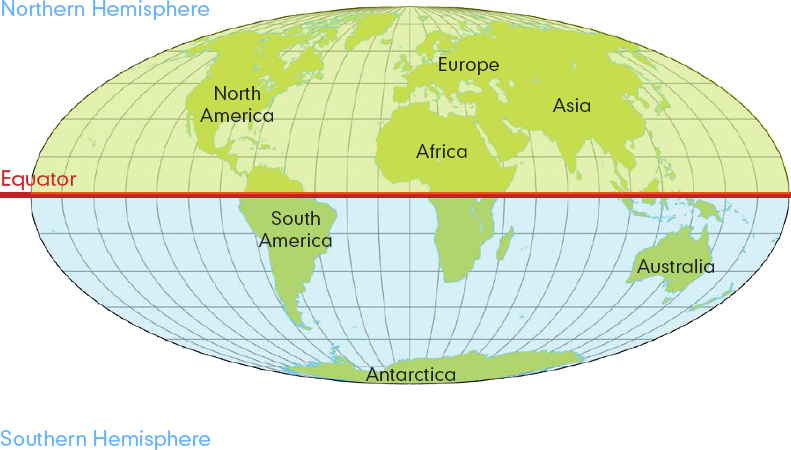
Fast Fact
Most tornadoes in the Northern Hemisphere rotate counter-clockwise. Tornadoes in the Southern Hemisphere tend to rotate in a clockwise direction.
The United States has about 1,200 tornadoes each year. Records werent kept until 1950 so accurate estimates arent fully known. Canada has about 100 per year.
Tornadoes have occurred in every US state. Some states have more than others. They tend to develop in areas between the latitudes of 30 degrees and 50 degrees. These regions have cold air meeting with warm air. The normal wind speeds are often different. This helps set up rotation patterns in storms.
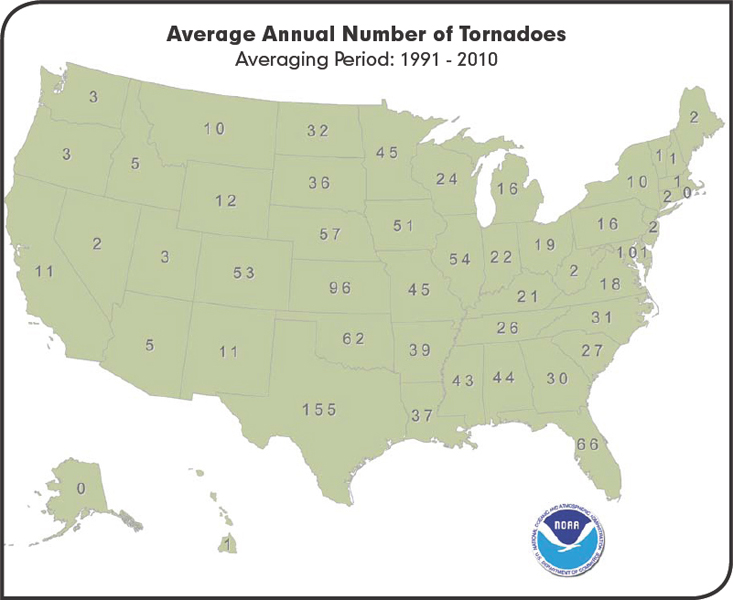
The largest number of tornadoes occur through the central US, between the Rocky Mountains and the Appalachian Mountains.
States in the central US have a higher than average number of tornadoes. This area is nicknamed Tornado Alley.
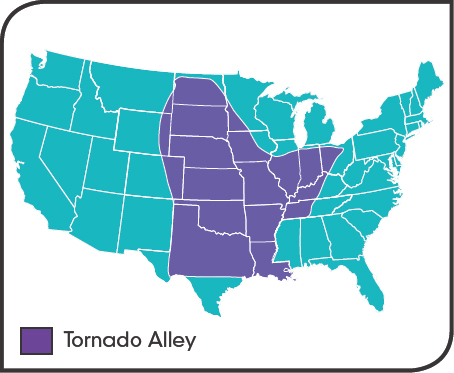
Most tornadoes develop during tornado season, although they can form at any time of the year. May through June is a peak time for the Southern Plains region. The Northern Plains and the Midwest have more tornadoes in June and July. Tornadoes most often take place between 4 p.m. and 9 p.m. but can occur at any time.
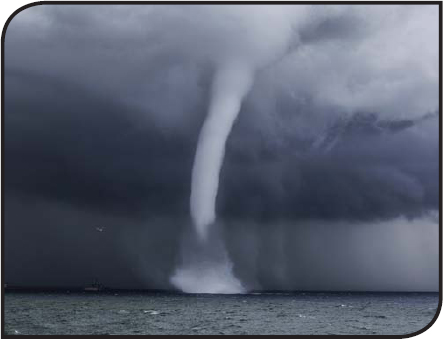
The best way to avoid a waterspout is to move at a 90 degree angle to its apparent movement. Never move close to investigate a waterspout. Some can be just as dangerous as tornadoes.
Fast Fact
A waterspout is a tornado over water. They are common over southern Florida and the Keys. Marine warnings are issued when waterspouts are seen over waters by the coast. They dont count officially as a tornado unless they reach land. Waterspouts can be dangerous. They turn boats over, cause damage to ships, and injure people.

